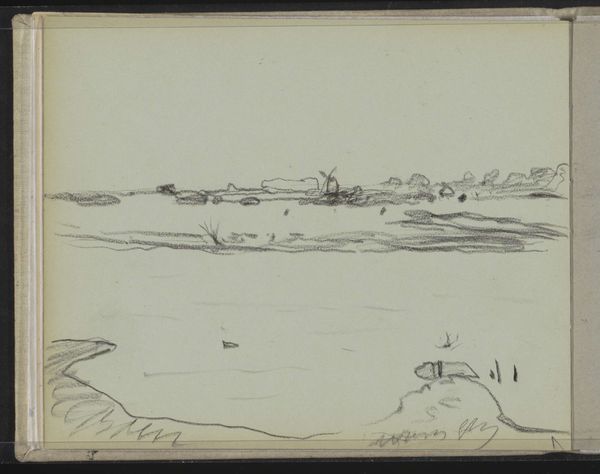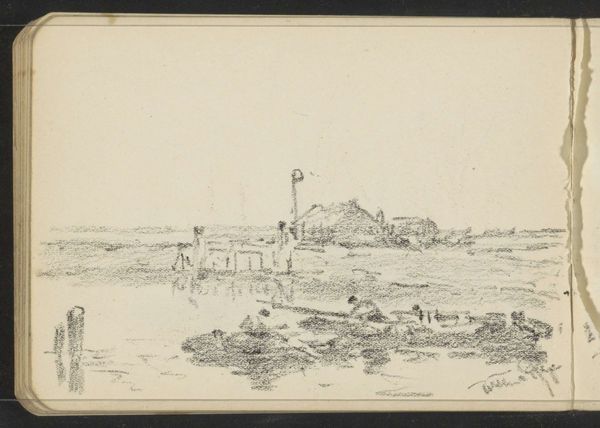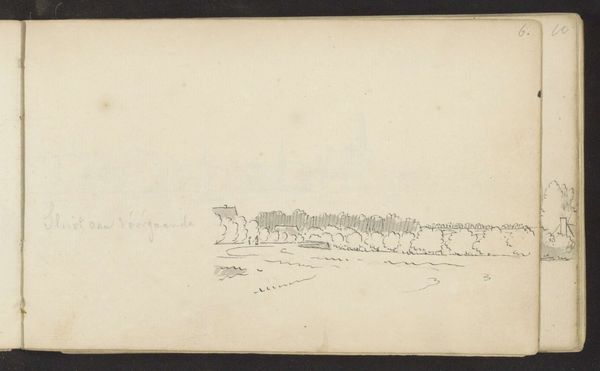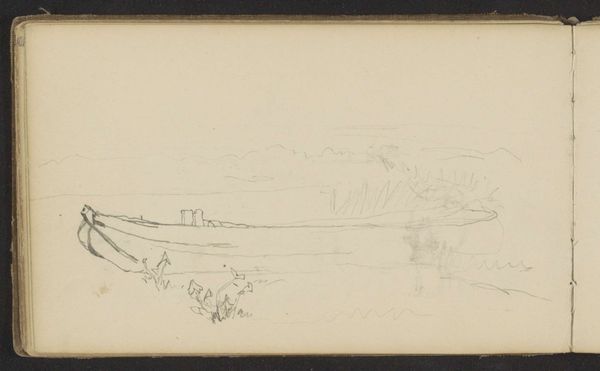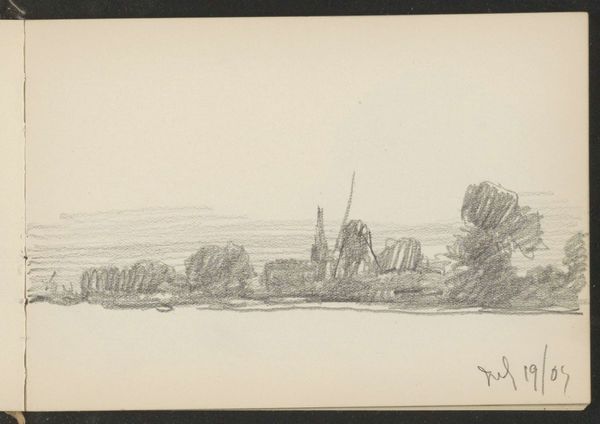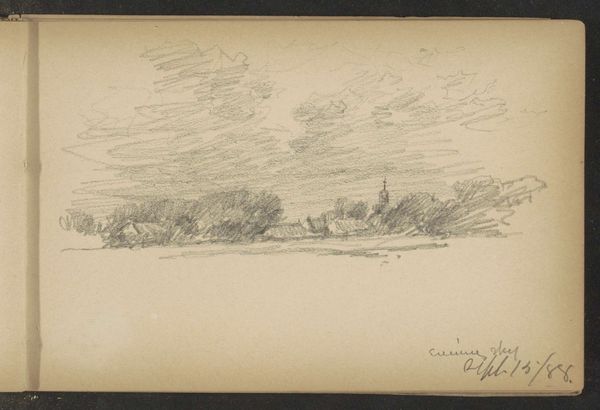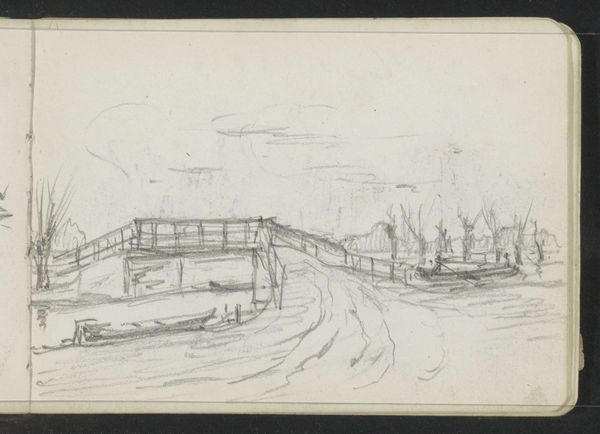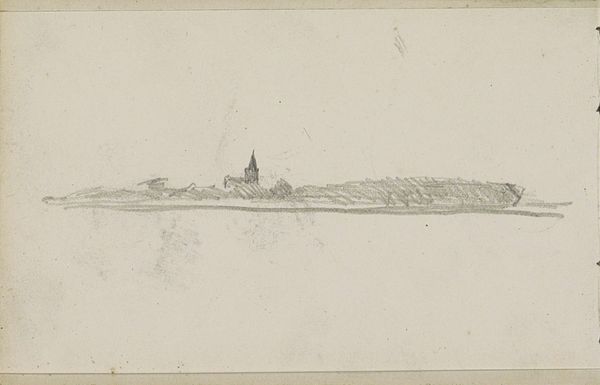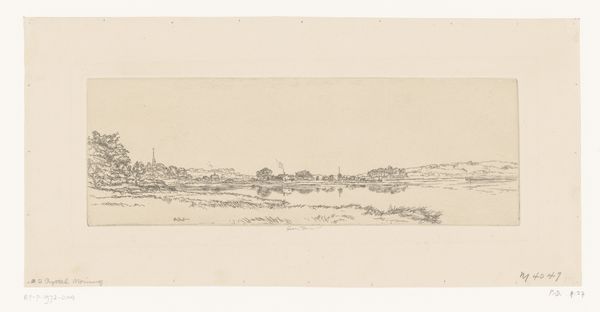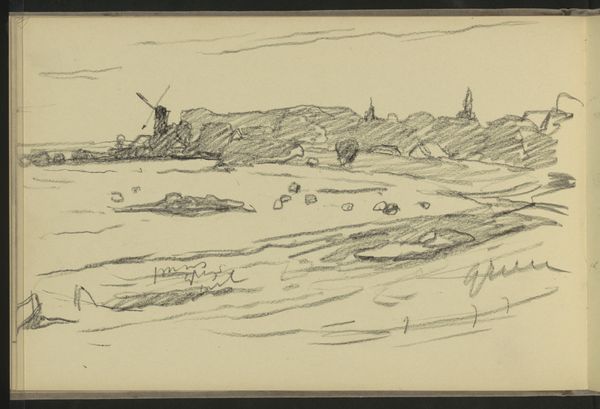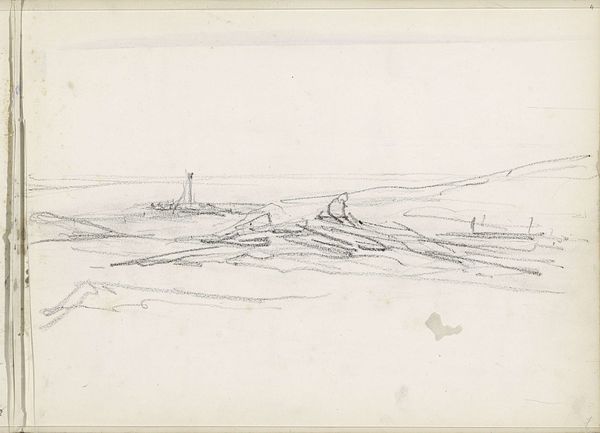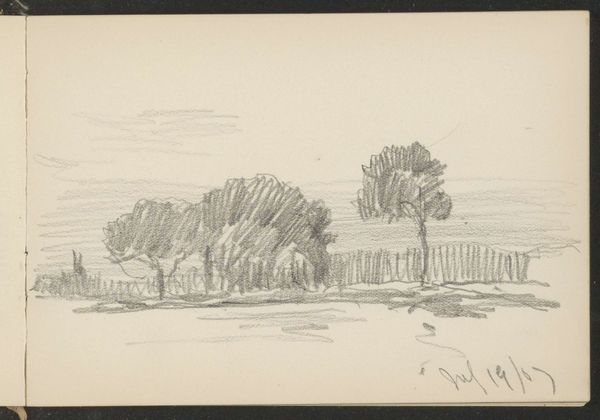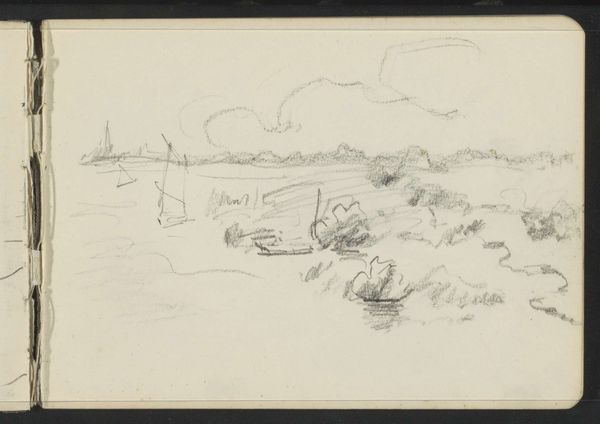
Copyright: Rijks Museum: Open Domain
Curator: Looking at this ink and pencil drawing titled "Landschap", made in 1923 by Alexander Shilling, I’m immediately drawn to its unassuming simplicity. Editor: There’s a melancholic feel to it, don't you think? The stark lines, the muted tones. It’s almost… haunting in its quietness. Curator: Indeed. Shilling was working during a time of tremendous social upheaval. There’s a rawness, perhaps born from witnessing dramatic political events, channeled here through the mundane scenery. Think about how new artistic collectives were forming at the time, often built around revolutionary social agendas. Shilling was part of a broader redefinition of public imagery. Editor: The landscape, with its sparse details and almost primitive lines, conveys a deeper symbolic message. Notice the dilapidated structure; perhaps it's a dock or a pier, almost swallowed by the surrounding land. Is this symbolizing the fading vestiges of a prior era being subsumed by the present? I am struck by its potential to mirror society's transitional phases, always marked by decline, change and impermanence. Curator: That pier does suggest obsolescence, doesn’t it? And look at the strokes – the way he renders the foliage. It's loose, almost chaotic, yet undeniably captures the essence of nature. Editor: Yet consider the perspective, Curator: seemingly straightforward, a casual moment captured in ink and pencil. Is this artist’s intention? Should it prompt introspection on what “lies” between the lines or just depict our surroundings devoid of any symbolism? Curator: Well, its value also resides in capturing the zeitgeist of artistic expression during a very particular historical period. The artist’s choice of landscape is perhaps both universal, as subject, yet equally influenced by contemporary tastes of portraying something less idealistic. It asks us about the social construction of art. Editor: You are correct, of course. Its strength is certainly found at those complex intersections. It’s that tension, I think, that will continue to engage viewers for years to come. Curator: Agreed. There’s certainly more than meets the eye here.
Comments
No comments
Be the first to comment and join the conversation on the ultimate creative platform.
